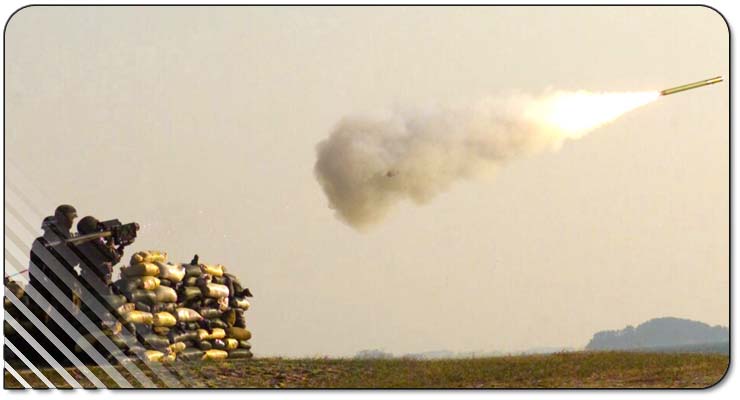Description:
Mission: The Stinger is a man-portable,
shoulder-fired guided missile system which enables the Marine to
effectively engage low-altitude jet, propeller-driven and helicopter
aircraft. Developed by the United States Army Missile Command, the
Stinger was the successor to the Redeye Weapon System. The system is a
"fire-and-forget" weapon employing a passive infrared seeker and
proportional navigation system. Stinger also is designed for the threat
beyond the 1990s, with an all-aspect engagement capability, and IFF
(Identification-Friend-or-Foe), improved range and maneuverability, and
significant countermeasures immunity. The missile, packaged within its
disposable launch tube, is delivered as a certified round, requiring no
field testing or direct support maintenance. A separable, reusable
gripstock is attached to the round prior to use and may be used again.
STINGER will also be employed by the Pedestal-Mounted Stinger Air
Defense Vehicle and the Light Armored Vehicle, Air Defense Variant
(LAV-AD) duri ng the 1990s.
Features: xxxxxxxxxx
Background: During the 1960s the Marine
Corps introduced its first lightweight shoulder fired surface-to-air
missile, the Redeye. During June 1966 the Redeye school was activated
at Marine Corps Base, 29 Palms California. By Sept. 1966, a Redeye
platoon was placed in each stateside Marine division. This gave Marine
commanders a viable air-defense capability that could be deployed to
any area of the battlefield. The Redeye missile served throughout the
1970's before giving way to the more technologically advanced Stinger
missile in 1982. The Stingers "all aspect" engagement capability was a
major improvement over the Redeye. In 1989 an improved Stinger,
equipped with a reprogrammable microprocessor (RPM), was fielded by the
Marine Corps. The RPM is a modular enhancement which allows the Stinger
to engage and destroy more sophisticated air threats.
|
|

